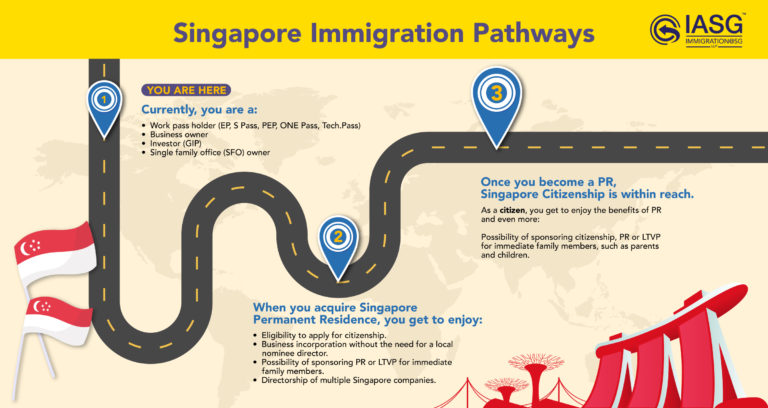Currently at 6.04 million people, Singapore is projected to reach its goal of 6.9 million population by 2030. What will happen after that? We explore some possible scenarios and its opportunities in immigration.
Will There Be a Lesser Chance for New Foreign Talent to Enter the Singapore Workforce?
Singapore’s policy towards foreign talent is shaped by its demographic needs, economic growth, and societal considerations. If Singapore reaches a population of 6.9 million, it doesn’t necessarily mean a reduction in opportunities for foreign talent but rather an evolving one. The government may further prioritise retaining and developing its local workforce and implement stricter quotas and eligibility criteria for foreign workers. This will make it more difficult for foreigners to enter Singapore’s workforce due to higher and stricter requirements.
Since COVID-19, immigration policies have already shifted to focus on “quality over quantity”, ensuring foreign talent fills skill gaps rather than competing directly with locals but this might be tightened even more in the future. Opportunities for foreign talent will depend largely on specific industry needs as it already has. Sectors with labour shortages or where Singapore lacks expertise such as technology, advanced manufacturing, and biomedical sciences will remain open to foreign talent but new opportunities for niche-skilled foreigners will become more available. Conversely, industries with sufficient local workforce availability might see reduced intake of foreign workers.
Recently, Singapore’s gradual policy changes have already made an impact in its foreign hiring statistics. As reported in the Population Brief 2024, S Pass and Employment Pass (EP) see a negative growth while Work Permit holders make the most of employment growth. This is a result of increased minimum qualifying salary for both S Pass and EP and levy fee for S Pass. Foreign employees who were previously holding S Pass and EP might have been downgraded to Work Permit, causing part of the increase in Work Permit holders but the bulk of Work Permit increase is in the Construction, Marine Shipyard, and Process (CMP) sectors. In future, foreign talent may be employed under the Work Permit instead of S Pass and EP, with high possibility of lower salary range.
Will Singapore Stop Issuing Permanent Residency (PR) and Citizenship?
There is no indication that Singapore will stop issuing Permanent Residency (PR) or citizenship once it reaches its projected population target of 6.9 million by 2030. The target, outlined in Singapore’s 2013 Population White Paper, was intended as a long-term planning guide rather than a strict cap, addressing population needs based on ageing demographics, low birth rates, and economic development.
Here are a few reasons why Singapore is unlikely to stop issuing PR and citizenship once it reaches this number:
1. Evolving Demographics and Workforce Needs
- Ageing Population: Singapore has one of the fastest-ageing populations globally, which puts pressure on the workforce and healthcare systems. Foreign workforce and new PRs can help support an ageing population by contributing to the workforce and economy, which would be difficult to sustain solely with natural population growth.
- Skill Gaps and Talent Needs: Singapore relies on a steady influx of foreign talent to fill gaps in high-demand industries, such as technology, healthcare, and finance. As the economy grows and diversifies, the demand for specialised skills will persist, making PR and citizenship an essential part of workforce planning.
2. Economic Competitiveness and Growth
- Global Talent Attraction: To remain competitive globally, Singapore needs to attract top international talent. PR and citizenship status are incentives that encourage skilled professionals to commit to Singapore, contribute to innovation, and drive economic growth.
- Population Growth as an Economic Driver: A stable or growing population is important for Singapore’s domestic economy, as it sustains demand for housing, services, and consumer goods. PRs and new citizens contribute to this economic stability and vibrancy.
3. Flexibility in Population Policy
- Adjustable Population Policies: The 6.9 million figure is a planning benchmark rather than a hard limit. Singapore’s government has always emphasised the importance of flexibility in its population policy, adjusting intake based on the economy, infrastructure capacity, and social dynamics. Ms Ho Ching, the wife of ex-prime minister Lee Hsien Loong has suggested that Singapore should have a 10 million population. Currently at 6.04 million, there are 4.18 million residents and about 1.86 million non-residents. This large number of foreigners living and working in Singapore has alarmed the local population, causing Prime Minister Lawrence Wong to assure the nation that the number of non-residents will never exceed the locals.
- Selective Intake: Singapore may adjust the rate and selectivity of PR and citizenship applications rather than halting them entirely.
Will Singapore Announce a New Population Target?
Singapore has not announced any plans for a new population target. The government may reassess its planning based on updated demographic trends, economic needs, and public sentiments. Any new projections or targets would likely be released through official reports or white papers following public consultations.
Singapore’s population strategy focuses on maintaining a balance between economic growth, societal integration, and sustainability. Policies are influenced by factors such as the birth rate, aging population, foreign talent needs, and urban development capacity. The idea of Singapore potentially reaching a 10 million population was associated with a remark made by former Chief Planner Liu Thai Ker in 2013, who suggested planning for such a number in the long term to ensure flexibility in urban development. However, this suggestion was speculative and intended for future-proofing rather than a policy goal.
The Singapore government has repeatedly clarified that there is no intention to aim for a 10 million population. Ex-Prime Minister Lee Hsien Loong said the focus remains on a sustainable balance between population growth and infrastructure.
This discussion reflects ongoing debates about balancing population density, economic needs, and quality of life in land-scarce Singapore. While planning for long-term possibilities, the government is clear that such figures are speculative and subject to public sentiment and resource capacity. Thus, a new population target is still under review.
Opportunities to be Seized Now Before Reaching 6.9 Million Population
Anyone who would like to work and live long-term in Singapore should take action now! As the years pass, Singapore will continue to review and tighten its immigration policies, making it more difficult for those who don’t act fast.
Immigration@SG is your trusted partner for navigating the complexities of Singapore’s immigration landscape. We provide expert guidance tailored to your unique needs. Our team is committed to simplifying the process, offering strategic advice, and ensuring compliance with Singapore’s regulations. With a deep understanding of immigration policies and a client-centric approach, Immigration@SG empowers individuals and businesses to achieve their relocation and long-term residency goals in Singapore seamlessly. Call/Whatsapp +65 8766 1966 or email to info@iasg.com.sg for these services:
- Singapore Permanent Residency Application
- Singapore Citizenship Application
- Work Pass Applications
- Business Incorporation
- Family Office Setup
- Global Investor Programme
- General Singapore Immigration Advisory







